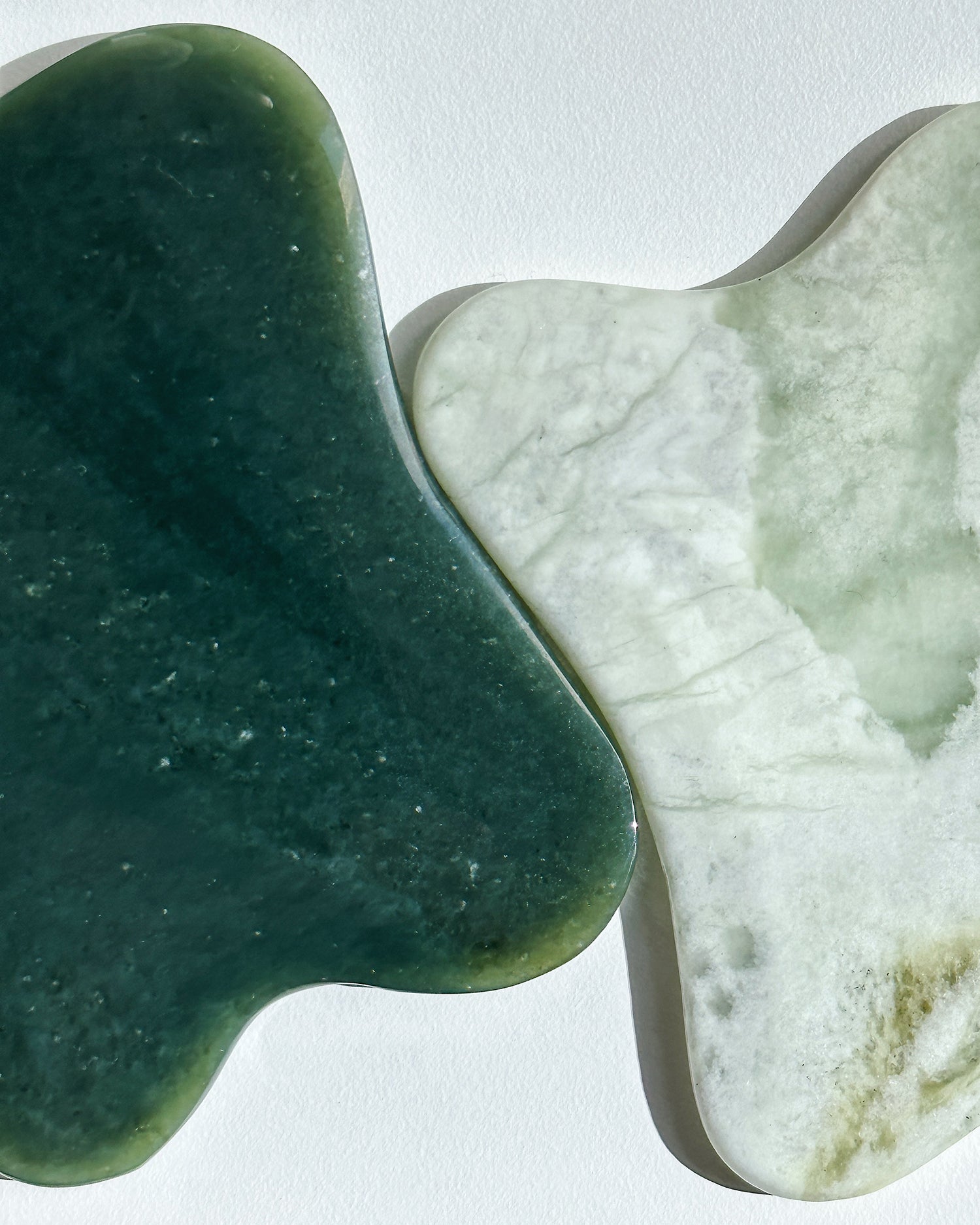Selecting a material for our Cosmic Stone was a long and thoughtful process, one marked by a quest to find an optimal medium for a beneficial Gua Sha practice, and from there designing a tool that would comprehensively lift, sculpt and rejuvenate the unique contours of the face and neck.
After much research, testing and development (we actually worked with a real-life rocket scientist friend who transformed our tool sketches into mechanically engineered prototypes!), we opted to carve our Cosmic Stones from two different beloved Jade varieties—Nephrite and Xiuyan. While both types provide an effective and enjoyable Gua Sha experience, each stone possesses its own unique profile in appearance, tactility, and more. Read on for more about this mythical stone and it’s distinctive properties including an excerpt from a favorite book, Jade: Stone of Heaven.
"Nearly twenty-four hundred years ago Confucius stated that if Jade is highly valued it is because, since ancient times, the wise have likened it to virtue. For them, its polish and brilliancy represent the whole of purity; its perfect compactness and extreme hardness represent the sureness of the intelligence; its angles, which do not cut, although they seem sharp, represent justice; the pure and prolonged sound which it gives forth when one strikes it represents music. Its color represents loyalty; its interior flaws, always showing themselves through the transparency, call to mind sincerity; its iridescent brightness represents heaven; its admirable substance, born of mountain and of water, represents the earth. Used alone without ornamentation it represents chastity. The price which all the world attaches to it represents the truth."
— excerpt from Jade: Stone of Heaven by Richard Gump (published 1980).
Image: Portrait of Lady Hoja is a Qing Dynasty oil on canvas painting created by Giuseppe Castiglione (郎世寧) in 1760.
At the most fundamental level, Nephrite and Xiuyan differ in look and feel.
Nephrite, which comes from the Xinjiang Province in China, ranges in shades of deep, dark green to near black with an opaque appearance. This precious variety of Jade which is traditionally used for fine-jewelry and special ornamental carvings, carries a weighted feel in hand and touts a smooth, luminous and high-polished surface and delivers an ultra-luxurious Gua Sha experience.
In contrast, Xiuyan shades vary from a range of light greens to milky yellow-greens, with a translucent to opaque appearance. This classic Chinese Jade hails from the Liaoning Province and is more abundant in reserve. Tactility-wise, Xiuyan embodies a lighter feel in hand and features a smooth, polished surface with a matte texture for a quintessential and soothing practice. When you see “Jade” Gua Sha tools on the market, this is typically the kind used.
Characteristically, Nephrite is a harder stone density-wise in comparison to Xiuyan. This means Nephrite is a bit more durable, but this also makes Nephrite a more challenging material to work with that requires more time, skill and expertise to carve.
As Xiuyan is richer in reserve, the price differential comparatively to Nephrite is also reflective of this. While Xiuyan is more widely available, it is still considered a highly desirable stone for jewelry carving, decorative ornaments and–of course–Gua Sha tools.
Historically, both Nephrite and Xiuyan have been revered for centuries in Chinese culture. At their foundation, both Jade types lend themselves to an effective, enjoyable and skin-restorative Gua Sha experience, and we hope our Cosmic Stones become a treasured part of your skincare practice.







